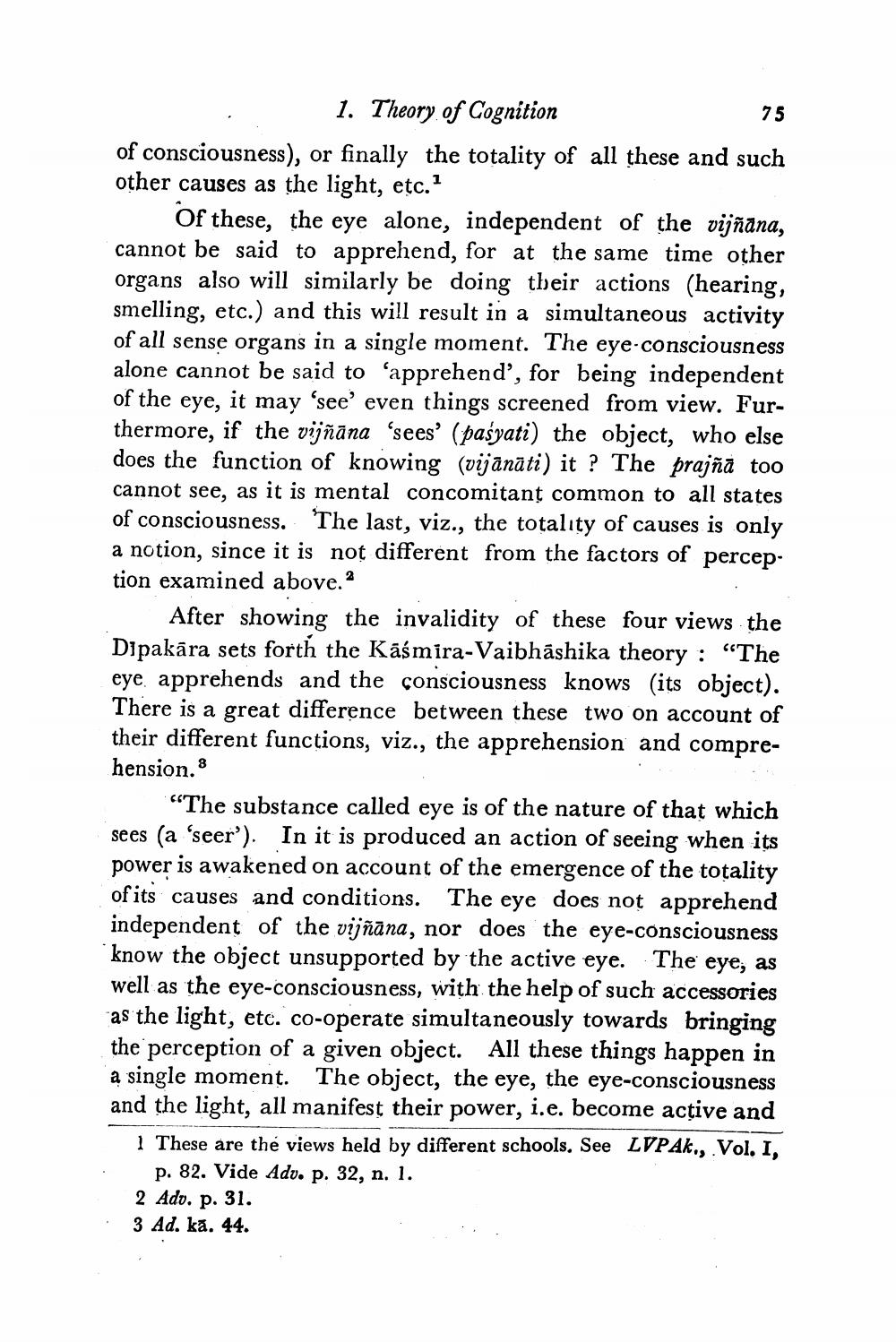________________ 1. Theory of Cognition 75 of consciousness), or finally the totality of all these and such other causes as the light, etc.? Of these, the eye alone, independent of the vijnana, cannot be said to apprehend, for at the same time other organs also will similarly be doing their actions (hearing, smelling, etc.) and this will result in a simultaneous activity of all sense organs in a single moment. The eye-consciousness alone cannot be said to 'apprehend', for being independent of the eye, it may 'see' even things screened from view. Furthermore, if the vijnana 'sees' (pasyati) the object, who else does the function of knowing (vijanati) it ? The prajna too cannot see, as it is mental concomitant common to all states of consciousness. The last, viz., the totality of causes is only a notion, since it is not different from the factors of perception examined above. After showing the invalidity of these four views the Dipakara sets forth the Kasmira-Vaibhashika theory : "The eye, apprehends and the consciousness knows (its object). There is a great difference between these two on account of their different functions, viz., the apprehension and comprehension.8 "The substance called eye is of the nature of that which sees (a 'seer'). In it is produced an action of seeing when its power is awakened on account of the emergence of the totality of its causes and conditions. The eye does not apprehend independent of the vijnana, nor does the eye-consciousness know the object unsupported by the active eye. The eye, as well as the eye-consciousness, with the help of such accessories as the light, etc. co-operate simultaneously towards bringing the perception of a given object. All these things happen in a single moment. The object, the eye, the eye-consciousness and the light, all manifest their power, i.e. become active and | These are the views held by different schools. See LVPAK., Vol. I, . p. 82. Vide Adv. p. 32, n. 1. 2 Ado. p. 31. 3 Ad. ka. 44.




